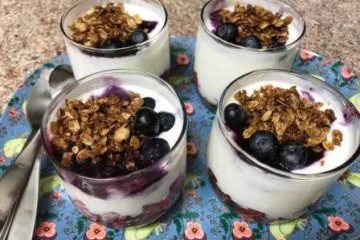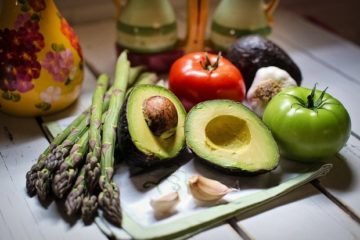How to start eating right: 12 actionable tips

“You are what you eat” – you may have heard this before. This is absolutely true. What we eat (or don’t eat) plays an important role in our physiological health. Therefore, it is extremely important for each of us to learn how to start eating right.
Unfortunately ¾ people eat junk food at least once a day … maybe you are one of them. If so, don’t panic, you can change that starting today.
However, if you are like most people, you will probably notice that the transition from unhealthy to healthy eating can seem a little daunting.
But wait a minute – if eating healthy seems such a big deal, is it possible to maintain a healthy daily diet? The short answer is absolutely!
In this article, we’ll show you how to learn how to eat right. Sit back and relax as we teach you 12 ways you can change your eating habits and prepare you for a healthy life.
Content
Healthy Eating Memo
So how to get yourself to eat right?
1. Identify the reasons for eating right
Quitting a bad habit is not always easy. Do you know why? Because it took you years to perfectly adapt to it.
How to start eating right
“The best seasoning for food is hunger.”
Socrates
Be clear about why you need to change your habits and constantly remind yourself of this.
Perhaps you want to lose a few (or many) pounds to get in shape for your upcoming wedding, or you are trying to avoid health problems related to junk food.
Whatever your reason, write it down on a piece of paper and place it so you can see it every day.
Trust me, it helps! If your motivation comes from within, you will have a much better chance of success. This is the only way you can always eat right.
2. Don’t berate yourself
If you want to create a sustainable lifestyle change, it will take a while, so rest assured if something doesn’t work out right away.
One of the biggest mistakes people make when trying to switch to healthier foods is trying to erase a habit they’ve taken years to create overnight.
Junk food stimulates the brain’s pleasure center, so cravings won’t go away overnight.
That’s why you should start small, gradually cutting back on unhealthy foods and replacing them with healthier ones.

If you can’t eat right right away, that’s okay.
3. Eat less sugary and highly processed foods
Sugar is a sweet poison. It does no good for your body and can do a lot of harm, including heart disease, cancer, and diabetes.
Think twice before pulling out your next soda bottle. According to dietary guidelines, one of the largest sources of refined sugar is in beverages – such as fruit juices, soft drinks, energy drinks, alcoholic drinks, sweetened coffee, and more.
Besides sugar-laden foods, highly processed foods are also harmful. This is due to the fact that most of the nutrients are removed from them during processing. This leads to “empty” calories and nutritional deficiencies.
4. Introduce clean and healthy foods into your diet
Clearing your fridge of junk won’t make a lot of difference to your health if you don’t stock up on healthy foods. But what is it?
How to start eating right
“An excess of food interferes with the subtleties of the mind.”
Seneca
Any food that nature provides (you know it grows in the ground and gets spoiled if not kept in the refrigerator) is pure food and really healthy. Examples of clean foods include fruits, vegetables, nuts, seeds, and unrefined whole grains (beans, brown rice, etc.).
Clean food contains fiber, protein, healthy fats, vitamins, minerals, and even antioxidants that are important for overall health.
When you fill your kitchen with these foods, you naturally eat them in large quantities and develop a strong taste for healthy eating.
5. Don’t ignore nuts and seeds
Nuts and seeds may seem tiny, but don’t be fooled – they do a serious nutritional blow to potential diseases.
For example, chia seeds contain protein, fiber, antioxidants, omega-3 fatty acids, and a ton of minerals like calcium, phosphorus, iron, and manganese. All of these nutrients play an important role in promoting health.
How can you eat right? Using more nuts and seeds in your diet is not difficult at all. You can sprinkle them on any salad, make them part of a baking recipe, or simply snack on them instead of fries or candy.
6. Add vegetables to your daily diet
Your transition to a healthy diet won’t be complete if you don’t include vegetables in your diet. Vegetables are packed with vitamins, minerals, and phytonutrients that help your body to function properly. This is an important point in understanding how to start eating right.
In addition to their impressive vitamin profile, vegetables, especially those high in fiber, also act as bulking agents. In other words, they make you feel fuller while consuming significantly fewer calories. They can also help reduce unhealthy food cravings.
But if the thought of eating raw vegetables makes you pluck your hair out of your scalp, there are several ways to liven things up.
One of them is frying vegetables with salt, pepper and oil. Combine that with your favorite whole grains and protein sources and you have a delicacy on your table that would be the envy of many of the world’s restaurants.
Another approach is to add vegetables to soups.

Either way, your body will thank you for eating such an amazing meal.
7. Make healthy food affordable
How to stop overeating and start eating healthy?
If you are really serious about eating healthy, then it goes without saying that you should surround yourself with healthy foods.
When you are really hungry, you will most likely eat the first thing you see. If it’s bananas and apples, great. But if your closet is still loaded with chips, this is the one that you will probably eat first.
Therefore, store healthy food in the most easily accessible places: on the kitchen cupboard, in the refrigerator, in the pantry, on the work table … everywhere!
Having healthy foods in front of your eyes can help you get used to the healthy eating habit much faster.
8. Eat from small plates
While it’s important to stock up on healthy foods, you still need to keep track of your portion sizes. If you eat too much whole grains, peas, and even fruits, you can still get fat.
When you eat in small plates, you will feel full faster, thereby avoiding overeating. Even when you are on a healthy diet.
9. Use Whole Grain Flour When Baking
What for? It contains wheat kernels that are not found in regular flour, and they significantly improve the nutritional properties of any foods you make with such flour.
If you don’t quite like the look or taste of the whole grain flour, you can gradually change it to white flour.
10. Drink a green smoothie every morning
Nothing beats the thrill of a green cocktail (smoothie) at the start of each day.
Start your day with a glass of fruits and vegetables. It will benefit your body. For example, green smoothies can help cleanse the colon, reduce sugar cravings, and provide the body with energy, vitamins and minerals. And – this may surprise you – it tastes great too!
Green smoothies are also high in chlorophyll, a powerful antioxidant that flushes free radicals out of the body.
Here’s a simple recipe: Take 2 bananas, 2 handfuls of leafy greens (like spinach), and 1 cup of water. Punch everything with a blender for a few minutes.
11. Pay attention to labels
Before buying any packaged product, you should seriously pay attention to what is written on its label. If it contains too many artificial ingredients, then it’s probably not good for you, so toss it and look for another one.
But how do you know if an ingredient is artificial? If a component makes you bite your tongue in an attempt to pronounce its name, then it is probably artificial and you’d better put it back on the shelf.
Try to buy products with natural ingredients.
12. Drink plenty of water
So far, we’ve discussed what to eat or not, but what you drink is just as important.
There is one liquid that you must constantly fill. This is water. You can never go wrong with drinking a lot of water.
Starting with one glass in the morning, try to work your way up to 2 liters of water per day. Your body will thank you for this.
Conclusion
Making the switch to a healthier diet isn’t as difficult as many think. All you have to do is start small and introduce at least one healthy food into your diet every week.
With these childish steps, you will ultimately achieve that every meal will fill you with energy and strength.
Be sure to keep you focused on results, remind yourself why you decided to make changes in your life.
We hope our guide on how to start eating right will help you 🙂







